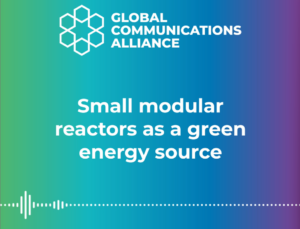Emma has a Masters degree in Security Strategy from the Strategy and Security Institute at the University of Exeter, where she achieved a Distinction and specialised in NATO’s policy towards Russia.
Why has Russia invaded Ukraine?
To truly understand why Russia has invaded Ukraine, you first have to understand the foreign policy that has existed in Russia for thousands of years – one of state expansion, empire and a deep seated instinct to defend itself from what it sees as hostile regional actors who threaten its security.
Geographically, Russia has no natural borders other than the Pacific and Arctic oceans, and has therefore been subjected to the geopolitics, wars and invasions of Europe, Asia and the Middle East. Historically, this led to a feeling of deep insecurity and the prevailing view amongst its political classes that Russia could only ever be secure if it expanded its influence into these areas to pre-empt and prevent what it still sees today as inevitable attack.
The groundwork of expansion was laid in the 1400s, with Tsar Ivan III tripling his territory and ending Mongol rule of Russia. The Russian Empire then followed, lasting from 1721 – 1917 and, at its peak, rising to become the third largest empire in history. Following the Russian revolutions and resulting civil war, a switch to communism and the removal of the ruling class did nothing to change Russia’s desire for expansion – and so the Soviet Union was born.
Russia’s thirst for expansion led to it becoming one of the world’s leading powers – but never the prevailing superpower. That title belonged first to the United Kingdom, and its own empire, and then to the United States of America. At each point in history, the UK and USA have sought to stifle Russian expansion and defend their own interests. The Cold War was fought along these lines, with military stockpiles, proxy wars and the development of nuclear weapons growing in direct correlation with the perceived threat to and from Russia. Ultimately, the North Atlantic Treaty Organisation (NATO) – a military alliance – was born as a means for Western powers to provide collective security for member countries against Soviet expansion.
All of this eventually culminated in the break up of the Soviet Union in 1991, which saw Russia lose almost two million square miles of territory. This included Russia’s immediate bordering states – which of course includes Ukraine, who’s capital city Kyiv was once the third most important city in the Russian Empire.
Following the breakup of the Soviet Union, Russia’s view on security has remained largely unchanged. Put in the most simple terms, Russia wants these now independent countries back – either as part of Russia, or under its sphere of influence. It wrongly sees Ukraine as rightfully Russian land, and views NATO – which has admitted fourteen former Soviet countries to the alliance since its founding and has been steadily increasing its defence support for Ukraine over the past decade – as an existential threat to Russia’s survival.
The invasion of Ukraine is therefore the latest symptom of Russia’s ongoing fight to block NATO expansion and to reclaim former Soviet states. Putin’s actions follow Russia’s prevailing foreign policy, and is just the most recent display of military adventurism, political meddling and invasion following the ‘colour revolutions’ in Georgia and Ukraine (2003-2004); Russia’s military intervention in Georgia (2008); the annexation of Crimea (2014); and ongoing interference in both the Baltic states and Western powers’ political matters.
So what next for Ukraine?
Ukraine is now fighting a war with one of the world’s largest military powers, and no other country can commit to putting boots on the ground without either making themselves a target of Russian aggression, or invoking NATO’s Article 5, which would compel every NATO member to go to war should one member be threatened. Such a move would lead to war in Europe at a scale unseen since the Second World War.
But all is not lost. Intelligence reports from both Russia and Ukraine show that Russia has severely underestimated Ukraine’s ability to hold off attack. By all accounts, Russia has already deployed two thirds of its military to Ukraine but at the time of writing, and six days since the invasion, has failed to take any major Ukrainian city. Ukraine’s military, and civilian conscripts, have slowed the Russian advance.
The aim for Ukraine’s military leaders will be to continue to push back the Russian advance for as long as possible – aided by unprecedented economic aid and military equipment from the UK, USA and EU.
By pushing the Russians back for as long as possible, Ukraine is making the cost of war known to Putin and his military commanders – not just in terms of lives sadly lost, or the huge economic cost to Russia, but also in domestic support for the war. Ordinary Russians did not sign up for a protracted conflict in a part of the world many of them have relatives and friends. There is already growing dissent, with brave Russians turning out for anti-war protests despite the state brutality and arrest that faces them. Putin will not be able to justify the war to his own people for much longer, especially as news of Russian losses trickle back to Moscow.
Putin knows this, which is why he has upped the rhetoric around the use of nuclear weapons. Again, this is nothing new. Russia’s military doctrine calls for an ‘escalate to de-escalate’ strategy – which essentially says that when backed into a corner, Russia should inflict the fear of nuclear warfare while increasing civilian casualties, in order to force its enemy to come to the negotiating table and accept its terms for a cease-fire. Russia will want to emerge from this war having at least taken the port city of Mariupol as it seeks to create a land bridge between their armies in the annexed Crimea and the separatist held regions in the east.
If Ukraine wants to remain sovereign, it must resist playing into the Russian military handbook, but we can also expect violence and civilian casualties to increase as a result.
We also have to remember that in an age of hybrid-war, conflicts are no longer won solely on the battlefield. Ukraine is already winning the information war – with a smart communications campaign that has wasted no time in countering Russian misinformation and increasing the support for Ukrainian efforts, President Volodymyr Zelenskyy proving an especially impressive presence and demonstrating the value of social as well as traditional media in modern political communications. Ukraine has successfully stopped Moscow from being able to legitimise its actions, thus forcing previously ‘neutral’ countries to condemn Russia and offer lethal and economic support.
The trick now will be to ensure Putin’s actions reaches those Russian oligarchs and elites who prop up Putin’s regime, and on whom he relies for continued economic and political power. Once the oligarchs start doubting, Putin’s time is in power may be limited.
What can the West and NATO do to help?
We already know that NATO countries can’t commit direct military support, but there is a lot we’re already doing. In short, it’s all about sanctions. Sanctions are commercial and financial penalties imposed against a state, and individuals within a state, for political, military and economic reasons. It isn’t just a political signal that a country disagrees with the actions of another country, it is a real way of inflicting economic harm to the targeted state.
In this case, sanctions have been applied at unprecedented scale to Russia by the UK, USA, Canada, the EU, Scandinavia and more. They include measures that target both Russia’s financial and military-industrial machines, as well as cultural events and the bank accounts of individuals.
This includes preventing the Russian Central Bank from deploying its £540bn of international reserves to the military effort; banning Russia from essentially raising its sovereign debt; cutting some Russian banks from the Swift international payment system – a move which will essentially block Russian imports and exports; and the USA placing 80% of Russia’s banking sector under restrictions – cutting off its largest bank from conducting transactions in US dollars.
At the same time, transport sanctions mean Russia no longer has access to UK and EU airspace, making it more difficult to enter Ukraine from bordering countries, or to continue trade or commercial travel. And sanctions on exports to Russia of items like semi-conductors, computers, and defence equipment make it far more difficult for Moscow’s defence industry to re-arm.
The EU has also taken the unprecedented step of working with the UK, USA and others to provide lethal support to Ukraine – with member states providing military equipment and weapons. This is the first time the EU, a political alliance, has taken such a step, and demonstrates the urgency with which the world is treating this crisis.
All of this increases the cost of war to Russia and its citizens, making it more difficult to Putin to sustain a war in Ukraine indefinitely.
What about NATO?
The invasion of Ukraine signals to NATO that Russia is once again willing to go to war to defend its interests and reclaim former Soviet countries. It also shows that NATO has failed to deter Russia from attacking one of its strategic partners. NATO’s focus now is on upgrading is current deterrence posture to make it less likely for Russia to enter one of the NATO countries that border Ukraine and Russia.
Deterrence is the threat of force, or harm, in order to stop an enemy from taking an action. Conventional wisdom dictates that the key to deterrence is showing enough ability to act, or cause harm. As long as each side wants to avoid death, the military potential should work to deter conflict. If NATO gets its deterrence posture right, the threat of harm to Russia should be enough to stop further expansion.
However, history is littered with examples of deterrence failures despite a balanced display of forces which promise mutual destruction, and even examples of a weaker side attacking a stronger country.
Take the Falklands War as an example. Argentina was well aware that the UK military was vastly superior to its own. However, the UK had been removing its military presence around the Falkland Islands over the course of several decades. Despite the British reaffirming that the islands remained British territory, Argentina seized upon the mismatch between action and rhetoric, finally assuming that the UK didn’t care enough about keeping the islands to fight a war. And so they invaded.
Deterrence failed here because the UK forgot that for deterrence to work, actions have to match rhetoric. Deterrence is all about credibility. This means that the capabilities you have must be known to be capable of either denying or defeating the enemy. It also has to at least appear that the defender is as attached to the object he is defending as the attacker is. The woollier these lines become, the more room is left for one side to assume disinterest, or inability to act, and the weaker the deterrent becomes.
So how does the above example fit with what’s happening in Ukraine? NATO countries failed to appear as though they cared enough about the sovereignty of Ukraine in order to act if it were attacked. The previous invasions of Georgia and Crimea drew only a muted response, which emboldened Putin. Russia took advantage of this, assuming that the West would again be unwilling to risk military escalation for a non-NATO country, and decided to invade.
To avoid making the same mistake again, NATO’s actions need to match its rhetoric. That’s why we’re seeing an increase in NATO forces and weapons in Poland and Estonia, and a historic change in Germany’s foreign policy to increase spending. We’re unlikely to see these forces or pledges change any time soon, even if Russia withdraws from Ukraine.
This, combined with the stringent economic sanctions placed on Russia, should be enough to stop further Russian expansion.
Put simply, Russia miscalculated. They thought Ukraine would be an easy country to invade. Ukraine is proving them wrong. They thought NATO countries and its strategic partners would be unwilling to arm Ukraine, or impose the most stringent of sanctions in fear of the effect it would have on their own trade, or of provoking Russia further. They were wrong.
Moscow’s miscalculation will ultimately prove costly for Russia and could, in the end, lead to Putin’s decline.







